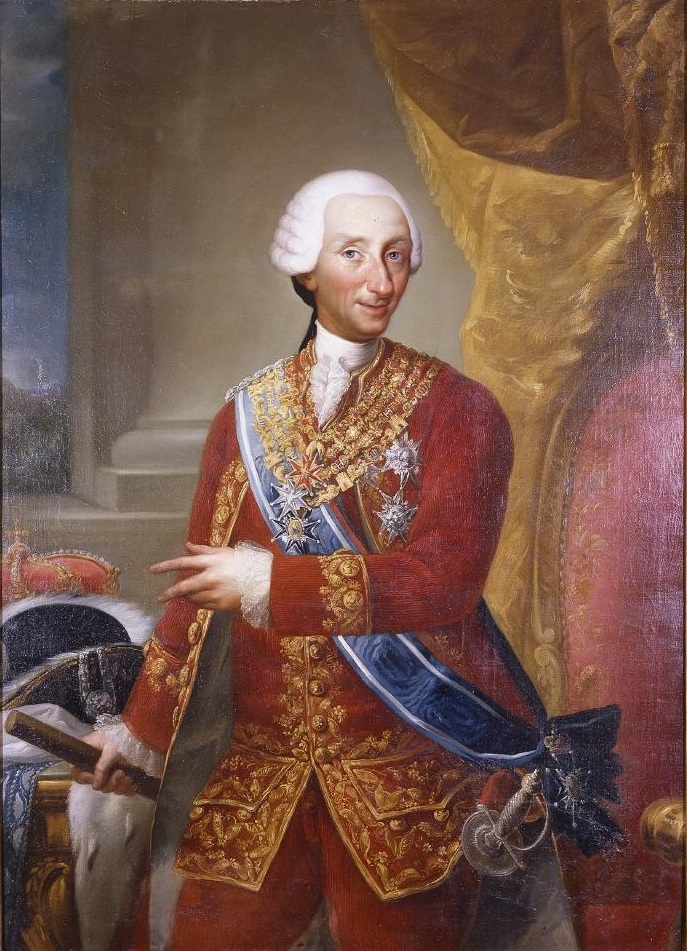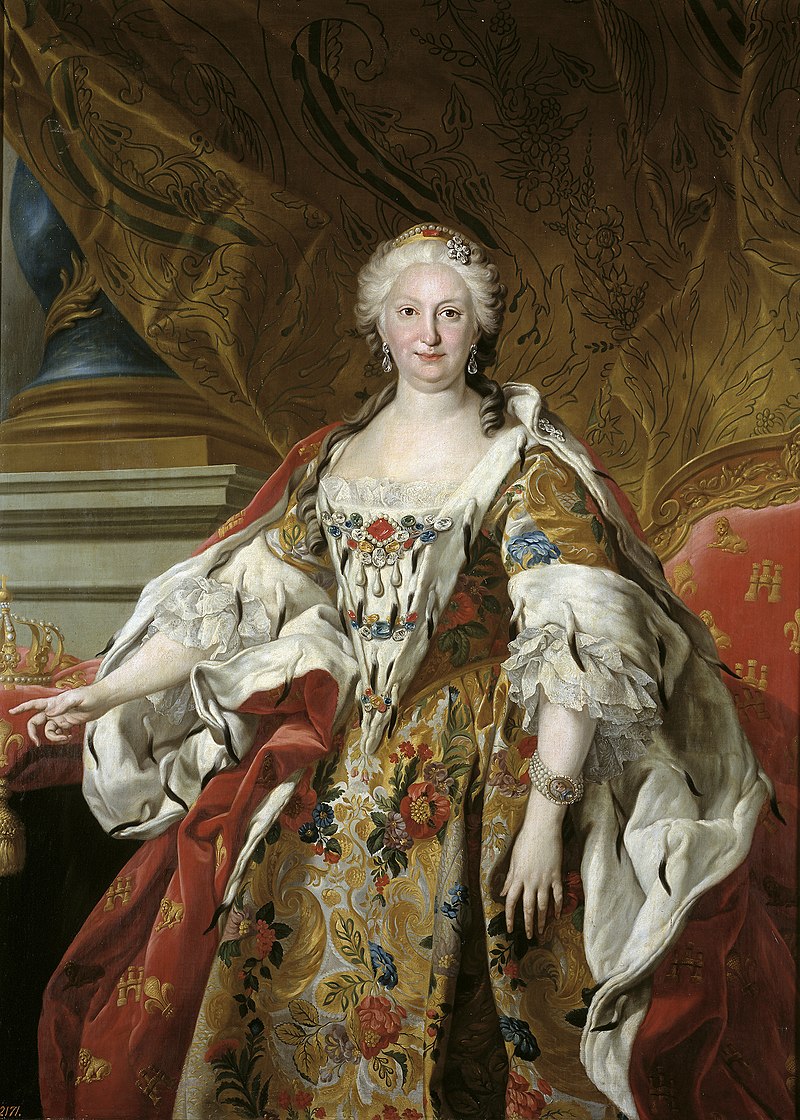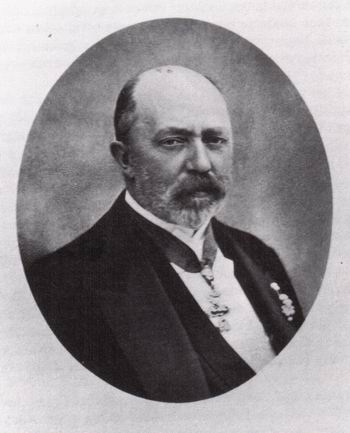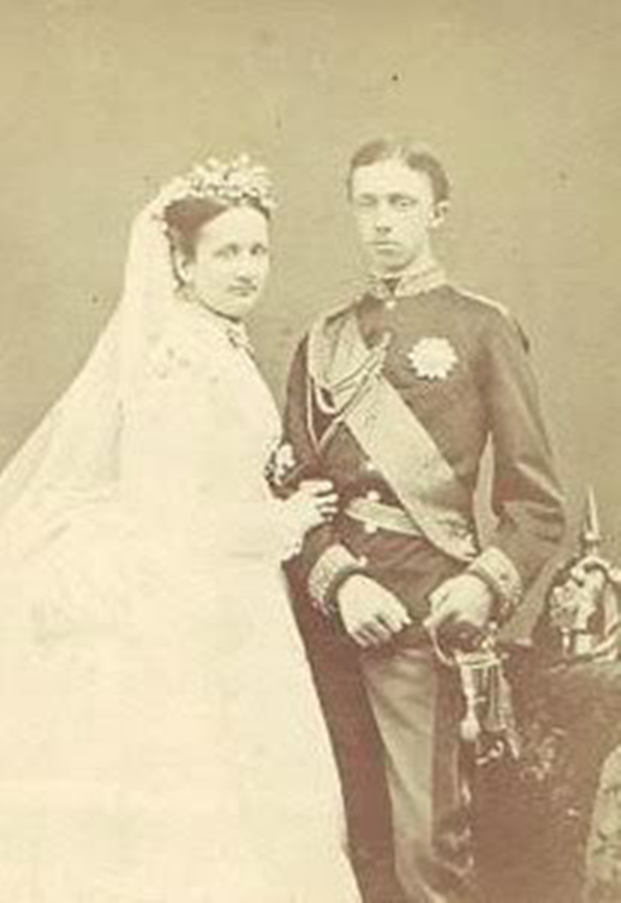by Susan Flantzer
© Unofficial Royalty 2023

Isabella of Parma, Archduchess of Austria; Credit – Wikipedia
The Holy Roman Empire was a limited elective monarchy composed of hundreds of kingdoms, principalities, duchies, counties, prince-bishoprics, and Free Imperial Cities in central Europe. The Holy Roman Empire was not really holy since, after Holy Roman Emperor Charles V in 1530, no emperors were crowned by the pope or a bishop. It was not Roman but rather German because it was mainly in the regions of present-day Germany and Austria. It was an empire in name only – the territories it covered were mostly independent each with its own rulers. The Holy Roman Emperor directly ruled over only his family territories, and could not issue decrees and rule autonomously over the Holy Roman Empire. A Holy Roman Emperor was only as strong as his army and alliances, including marriage alliances, made him, and his power was severely restricted by the many sovereigns of the constituent monarchies of the Holy Roman Empire. From the 13th century, prince-electors, or electors for short, elected the Holy Roman Emperor from among the sovereigns of the constituent states.
Frequently but not always, it was common practice to elect the deceased Holy Roman Emperor’s heir. The Holy Roman Empire was an elective monarchy. No person had a legal right to the succession simply because he was related to the current Holy Roman Emperor. However, the Holy Roman Emperor could and often did, while still alive, have a relative (usually a son) elected to succeed him after his death. This elected heir apparent used the title King of the Romans.
Learn more at Unofficial Royalty: What was the Holy Roman Empire?
********************
Princess Isabella of Parma, Infanta of Spain was the first wife of the future Joseph II, Holy Roman Emperor who was also the ruler of the Habsburg hereditary lands. Isabella died before Joseph became Holy Roman Emperor. Isabella Maria Luisa Antonietta Ferdinanda Giuseppina Saveria Dominica Giovanna was born on December 31, 1741, at Buen Retiro Palace in Madrid, Kingdom of Spain. She was the eldest of the three children and the elder of the two daughters of Infante Felipe of Spain, from 1748 until his death also Duke of Parma, Piacenza and Guastalla, and his first cousin once removed Princess Louise Élisabeth of France. Isabella’s paternal grandparents were Felipe V, King of Spain and his second wife Elisabeth Farnese of Parma. Her maternal grandparents were Louis XV, King of France and Marie Leszczyńska.
Isabella had two younger siblings:
- Ferdinando I, Duke of Parma, Piacenza and Guastalla (January 1751 – 1802), married Archduchess Maria Amalia of Austria, Isabella’s sister-in-law, had seven children
- Princess Maria Luisa of Parma (December 1751–1819, married her first cousin Carlos IV, King of Spain, had fourteen children, only seven survived childhood

Isabella’s maternal grandparents Felipe V, King of Spain and Elisabeth Farnese of Parma who were important during the early years of her life; Credit – Wikipedia
Isabella’s mother was only fourteen years old when she gave birth to Isabella. Two months later, Isabella’s father left to fight in the War of the Austrian Succession and did not return until Isabella was eight years old. Just a child herself, Isabella’s mother showed little affection toward Isabella and probably found the baby to be a burden. For the first seven years of her life, Isabella was raised at the Madrid court of her paternal grandfather Felipe V, King of Spain. Her paternal grandmother Queen Elisabeth was the primary influence in young Isabella’s life.
Following the 1748 Treaty of Aix-la-Chapelle, Isabella’s father became Duke of Parma and Piacenza, a title formerly belonging to the House of Farnese, his mother’s family. Isabella was now a Princess of Parma and a member of the new House of Bourbon-Parma. Isabella and her mother arrived in Parma in November 1749.

Isabella’s family in Parma in 1757; Isabella, age 16, standing in a light purple dress. Left to right are Isabella’s brother Ferdinando and sister Maria Luisa, her mother Louise Élisabeth of France, her father Felipe of Spain, Duke of Parma, Piacenza and Guastalla, and the children’s governess Marie Catherine de Bassecourt, Marchioness of Borghetto.
Isabella was well educated. She was eager to learn and was interested in many things. She read the writings of Italian and French philosophers and had an understanding of mathematics and military matters. Isabella was very musical and excelled at singing and playing the violin and the harpsichord. She drew, painted, and began to write about serious topics. As an adult, Isabella wrote on various topics including an analysis of her life, her philosophy, and the state of the world around her. Isabella wrote a humorous autobiography Les Aventures de l’étourderie (The Adventures of Amazement). In her Christian Reflections, she wrote about her thoughts on many religious questions, especially death.
Over and over again, Isabella expressed her desire to become a nun but other plans were in the works. To strengthen the relations between the Bourbons and the Habsburgs, Isabella’s grandfather King Louis XV of France and Maria Theresa of Austria, ruler in her own right of the Habsburg hereditary lands, Holy Roman Empress by her marriage to Franz I, Holy Roman Emperor and in reality the ruler of the Holy Roman Empire because her husband left the ruling to her, arranged a marriage between Isabella and Maria Theresa’s eldest son Archduke Joseph of Austria, the future Joseph II, Holy Roman Emperor and future ruler of the Habsburg hereditary lands.

Isabella’s husband, then Archduke Joseph of Austria, after her death Joseph II, Holy Roman Emperor; Credit – Wikipedia
A proxy marriage was held on September 5, 1760, at Padua Cathedral in Padua, then in the Republic of Venice, now in Italy. Josef Wenzel I, Prince of Liechtenstein, who had a successful military career in the Imperial Army of the Holy Roman Empire and as a diplomat for the Holy Roman Empire, was given the honor of escorting Isabella to Vienna, Austria. On October 6, 1760, at the Augustinerkirche (Augustinian Church) in Vienna, Austria, the two 18-year-olds Joseph and Isabella were married by the Papal Nuncio Cardinal Vitaliano Borromeo.
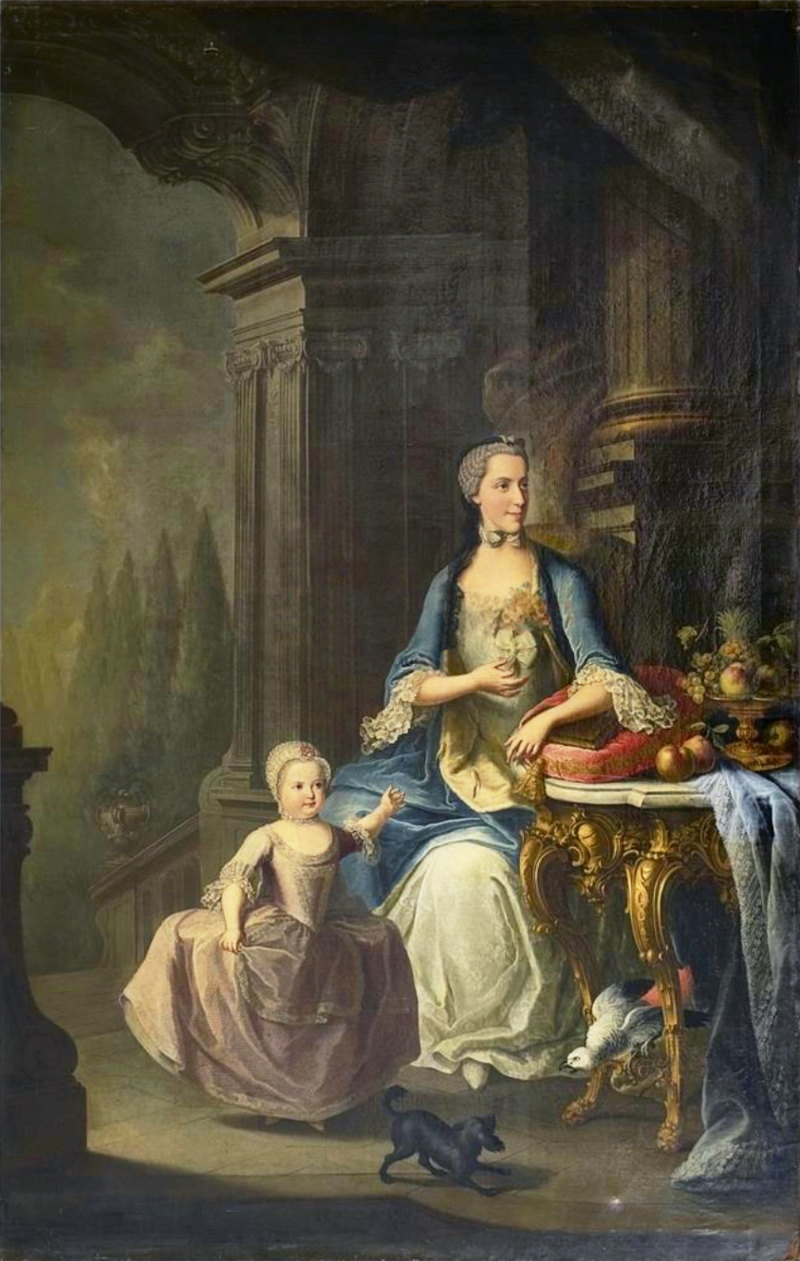
Isabella and her elder daughter Archduchess Maria Theresa; Credit – Wikipedia
Joseph and Isabella had two daughters but neither survived childhood:
- Archduchess Maria Theresa of Austria (1762 – 1770), died from pleurisy at age seven
- Archduchess Maria Christina of Austria (born and died November 22, 1763)

Left to right: Isabella’s husband Joseph, her mother-in-law Maria Theresa, Isabella, and Joseph’s sister Maria Christina in 1763; Credit – Wikipedia
Joseph adored his wife but Isabella hated the strict court ceremonies and was very reserved toward Joseph. Joseph’s sister Archduchess Maria Christina was Isabella’s best friend and closest confidante. Some modern historians believe that Isabella and Maria Christina likely had a romantic, and possibly a sexual relationship. They exchanged letters and small notes in French but only the nearly two hundred letters and notes written by Isabella have survived. Isabella’s letters and notes show a deep affection toward Maria Christina and are characteristic of a romantic-sexual relationship. See Wikipedia: Relationship with Archduchess Maria Christina and scroll down to A selection of quotes by Isabella in letters to Marie cited by Badinter as supporting a love affair.
Isabella had a very difficult first pregnancy with her first child Maria Theresa, suffering from many physical symptoms, depression, and a lingering fear of death. This was worsened by her inexperienced husband not understanding her problems. Isabella had miscarriages in August 1762 and January 1763. Her mother-in-law Maria Theresa, who had given birth to sixteen children, was so worried that she advised her son Joseph to wait for six months before trying for another child. However, Isabella was soon again pregnant.
It was a tradition that the imperial court spent the summer at Schönbrunn Palace in Vienna, away from the more populated central part of Vienna. In 1763, warm weather lasted well into the autumn and the court returned to Hofburg Palace, located in central Vienna, on November 14, 1763. Isabella would have preferred to remain at the more isolated Schönbrunn Palace. She was six months pregnant and there were reports of smallpox cases in and around Vienna. After returning to Hofburg Palace, Isabella developed a fever on November 18, 1763, and it soon became clear that she had smallpox. Isabella’s high fever induced labor three months early, and on November 22, 1763, she gave birth to a premature second daughter. As Isabella requested, the baby was baptized Maria Christina but died the same day.
Following the birth, Isabella was rarely conscious but during her moments of consciousness, she displayed extraordinary courage. Joseph, who had already had smallpox, stayed by her side and took care of her without a break. On November 27, 1763, one month and three days before her 22nd birthday, Isabella died from smallpox at Hofburg Palace in Vienna, Austria. Because her body was still infectious, it was buried quickly without an autopsy or embalming in the Maria Theresa Crypt at the Imperial Crypt in the Capuchin Church in Vienna, Austria. The tiny coffin of her daughter Maria Christina was placed under Isabella’s coffin. In 1770, when Isabella’s elder daughter Maria Theresa died at the age of seven from pleurisy, her coffin was placed next to her mother’s and younger sister’s coffins.

Isabella’s tomb in the middle with the coffin of her younger daughter Maria Christina sticking out underneath. To the right is the tomb of Isabella’s elder daughter Maria Theresa who died in 1770; Credit – By C.Stadler/Bwag – Own work, CC BY-SA 3.0 at, https://commons.wikimedia.org/w/index.php?curid=28671919
Joseph was devastated by Isabella’s death and never fully recovered. In a letter to Isabella’s father, Joseph wrote: “I have lost everything. My adorable wife and only friend is no more. (…) What a frightful separation! Can I survive it? Yes, and only to be unhappy all my life. (…) There is nothing I will enjoy ever again.” At his mother’s insistence, Joseph married again to his second cousin Maria Josepha of Bavaria, daughter of Karl VII, Holy Roman Emperor and Elector of Bavaria and Maria Amalie of Austria. On May 28, 1767, after only two years of a childless marriage, Maria Josepha died of smallpox, as had her predecessor Isabella. Joseph never remarried.
Smallpox, now eradicated, was a serious contagious disease that killed many and left many survivors scarred. The disease knew no class boundaries and royalty was as likely to suffer from it as the common folk. (See Unofficial Royalty: Royal Deaths from Smallpox.) Smallpox was a leading cause of death in the 18th century. It killed an estimated 400,000 Europeans each year in the 18th century. Before Edward Jenner developed the smallpox vaccine that contained the cowpox virus in 1796 and that ultimately led to the eradication of smallpox, there was another way to possibly prevent smallpox called variolation and it was first seen in China in the fifteenth century. In 1716, Lady Mary Wortley Montagu accompanied her husband to Turkey where he was to serve as the British ambassador. While she was in Turkey, Lady Mary observed the Turkish practice of smallpox variolation or inoculation and she brought the practice back to Great Britain. Lady Mary persuaded Caroline, Princess of Wales (wife of the future King George II) to arrange to have the inoculation tested using prisoners and orphans, all of whom survived the inoculation. In 1722, King George I allowed the inoculation of two of his grandchildren, the children of the Prince and Princess of Wales and they survived. Variolation gained acceptance and was used until Edward Jenner developed his much safer vaccination using the cowpox virus instead of the smallpox virus.
The tragedy of Isabella’s death and the death of Joseph’s second wife from smallpox along with the earlier deaths from smallpox of four of Joseph’s siblings, and the suffering of the Habsburg family members who had survived smallpox, contributed to Maria Theresa’s decision to have the younger members of the Habsburg family inoculated, and the subsequent acceptance of variolation in Austria, thus saving many lives.
This article is the intellectual property of Unofficial Royalty and is NOT TO BE COPIED, EDITED, OR POSTED IN ANY FORM ON ANOTHER WEBSITE under any circumstances. It is permissible to use a link that directs to Unofficial Royalty.
Works Cited
- Flantzer, Susan. (2023) Joseph II, Holy Roman Emperor also King of Bohemia, King of Hungary and Croatia, Archduke of Austria, Unofficial Royalty. Available at: https://www.unofficialroyalty.com/joseph-ii-holy-roman-emperor-also-king-of-bohemia-king-of-hungary-and-croatia-archduke-of-austria/ (Accessed: 04 September 2023).
- Flantzer, Susan. (2013) Smallpox knew no class boundaries, Unofficial Royalty. Available at: https://www.unofficialroyalty.com/royal-illnesses-and-deaths/smallpox-knew-no-class-boundaries/ (Accessed: 04 September 2023).
- Isabella von Bourbon-Parma (2023) Wikipedia (German). Available at: https://de.wikipedia.org/wiki/Isabella_von_Bourbon-Parma (Accessed: 04 September 2023).
- Princess Isabella of Parma (2023) Wikipedia. Available at: https://en.wikipedia.org/wiki/Princess_Isabella_of_Parma (Accessed: 04 September 2023).
- Wheatcroft, Andrew. (1995) The Habsburgs. London: Viking.
- Wilson, Peter H. (2016) Heart of Europe – A History of the Holy Roman Empire. Cambridge, MA: Harvard University Press.














